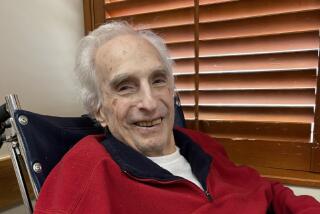Frankly, Someone Cares
- Share via
A friend of mine recently said he was going to come out to Hollywood and take a job as a reader, which he called the “lowest on the Hollywood food chain.” I told him that being a film historian in Hollywood was even lower.
That’s why I had mixed feelings when I read “Frankly, My Dear, ‘It Has Become of No Concern to Me’ ” (Dec. 27), an interview article on Aljean Harmetz and her new book on the making of “Gone With the Wind.”
Arthur Spiegelman’s lead says Harmetz is “using a treasure trove of documents few people knew existed. . . .” Excuse me, but Rudy Behlmer’s wonderful and massive 1972 book “Memo From David O. Selznick” is a collection of Selznick’s memos, notes and letters. The section in the book on “Gone With the Wind” runs 113 pages.
Spiegelman and Harmetz suggest that the fight over the famous “Frankly, my dear, I don’t give a damn” line is only now being brought to light. Behlmer has, among other things, Selznick’s Oct. 20, 1939, memo to Will Hays, the head of the censorship organization, on the line. And Gavin Lambert, in his 1973 book “GWTW: The Making of Gone With the Wind,” has a nice little paragraph on the fight over the line.
Spiegelman writes, “Harmetz said Selznick went through 11 screenwriters and script doctors. . . . “ Harmetz was not very thorough in her research. Richard Harwell, in his introduction to the published edition of the screenplay (“GWTW: The Screenplay,” 1980, Page 30), identifies the 17 people who served as what Harwell calls “writers and tinkerers on the script.”
Maybe if The Times made more of an effort to cover nonfiction books on Hollywood, your reporters and readers would not have been so likely to be taken in by Harmetz’s claims or Spiegelman’s gullibility.
TOM STEMPEL
Los Angeles
More to Read
Sign up for our Book Club newsletter
Get the latest news, events and more from the Los Angeles Times Book Club, and help us get L.A. reading and talking.
You may occasionally receive promotional content from the Los Angeles Times.







